Leaf litter has long been a bioactive mainstay in the industry.
It’s an easy way to add a touch of earthy color and texture, along with the critical bioactive fuel your terrarium (and its potential inhabitants) may need.
So, in this guide, we’ll cover the different types of litter, plus important considerations in choosing and using leaf litter in various setups with reptiles, isopods, and more.
Don’t leaf me hanging; let’s go!
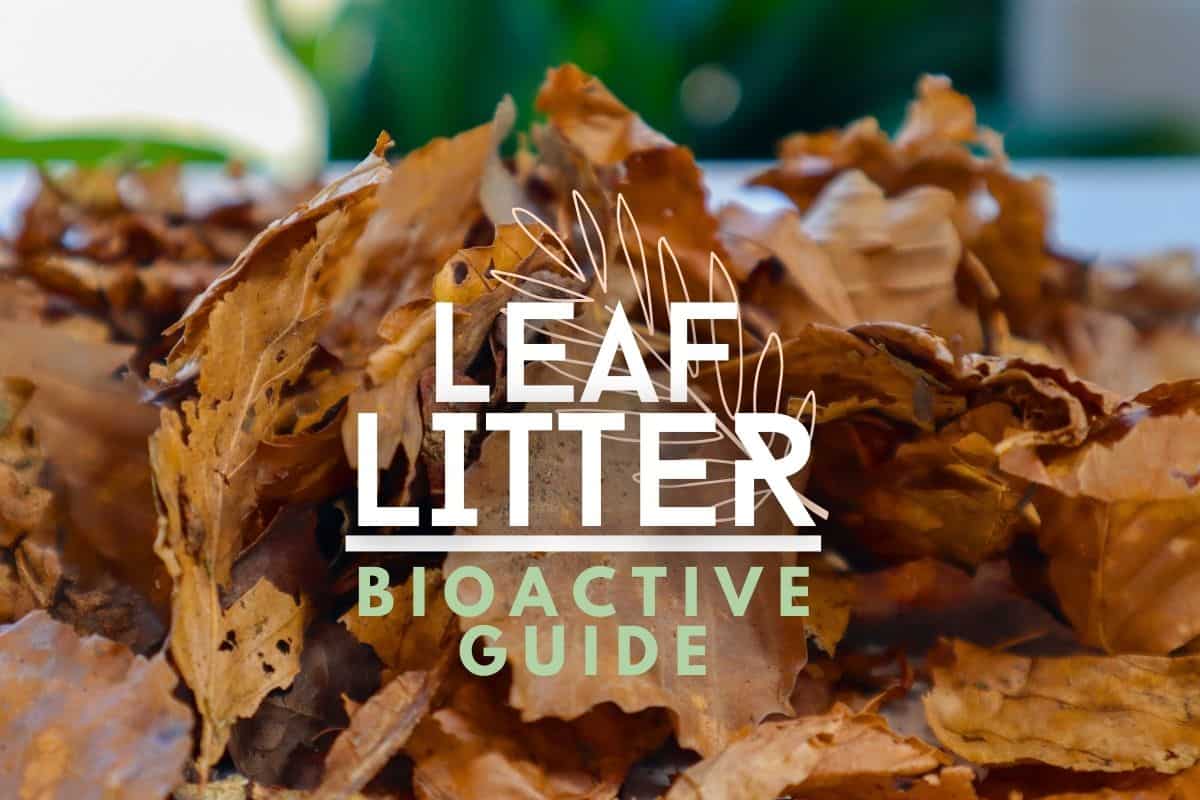
Terrarium Tribe is reader-supported. When you purchase through links on our site, we may earn an affiliate commission (at no further cost to you). 💜
Leaf Litter for Bioactive Terrariums
In nature, leaf litter is the natural medley of fallen leaves and branches that collect on the ground.
You know, all the good crunchy stuff underfoot? It gets broken down and recycled into nutrients for plants and animals, driving the forest’s bioactive cycles.
The leaf litter we use in bioactive plant terrariums is no different, really. It serves a dual purpose as a food source and a hiding spot for your isopods, springtails, and terrarium pets.
As a bonus, leaf litter also helps with things like moisture retention and soil health.
We’ve mixed crushed leaf litter in with our substrate before to enrich our blend (and to provide an additional food source for any burrowing isopods). Win-win.
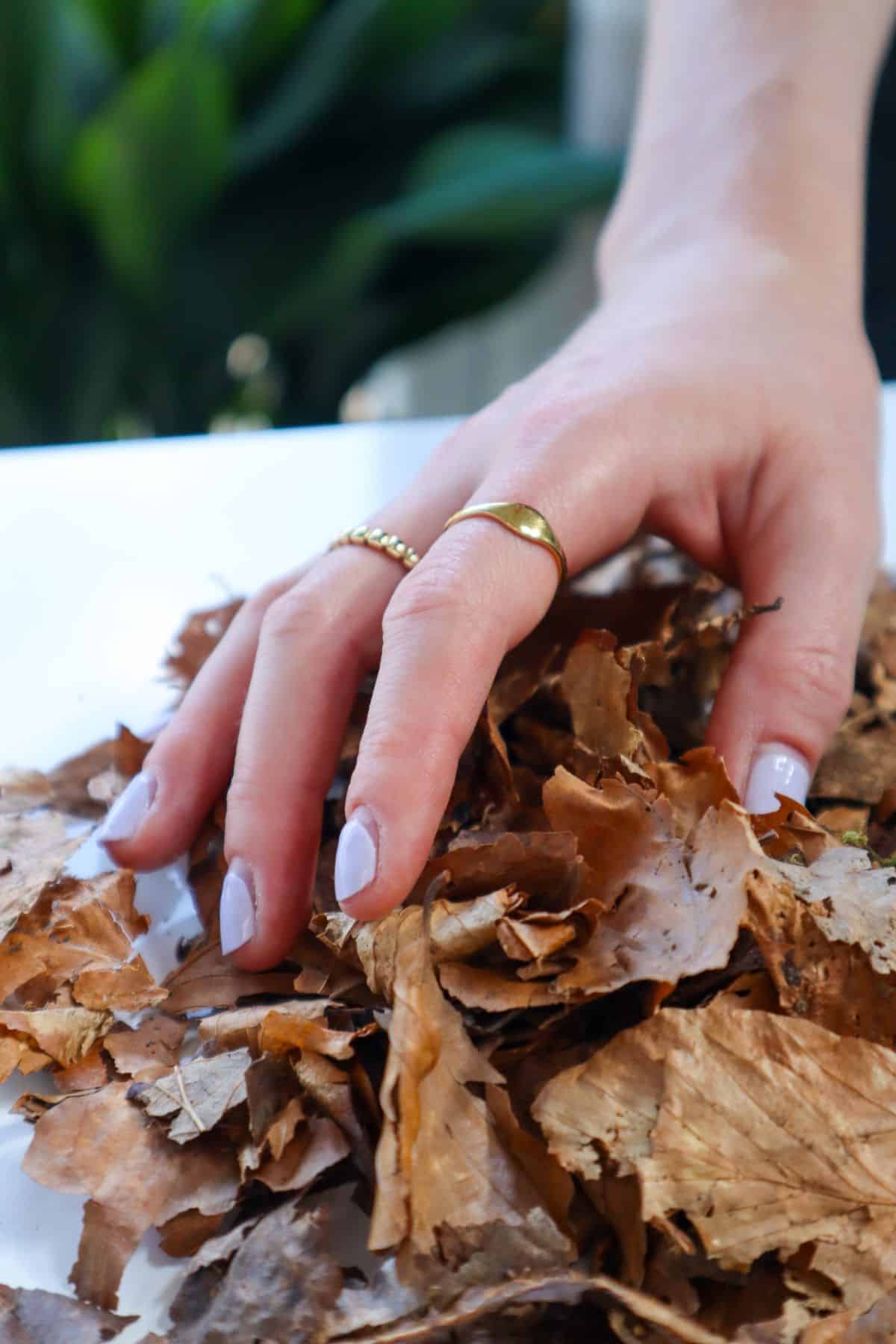
Terrarium Leaf Litter – What to Look Out For
As a product, leaf litter is typically limited to just the leaves for consistency.
The leaves themselves are sourced from a wide range of trees because leaves from different trees have different thicknesses, toughnesses (in terms of eating), and decomposition rates.
So, different leaves are arguably better for different setups, but most can benefit from a variety.
As with substrates, a mix is often best.
Seriously, any animal inhabitants are going to appreciate a more natural diversity of leaves in their environment, and they can take advantage of the different qualities that they may offer.
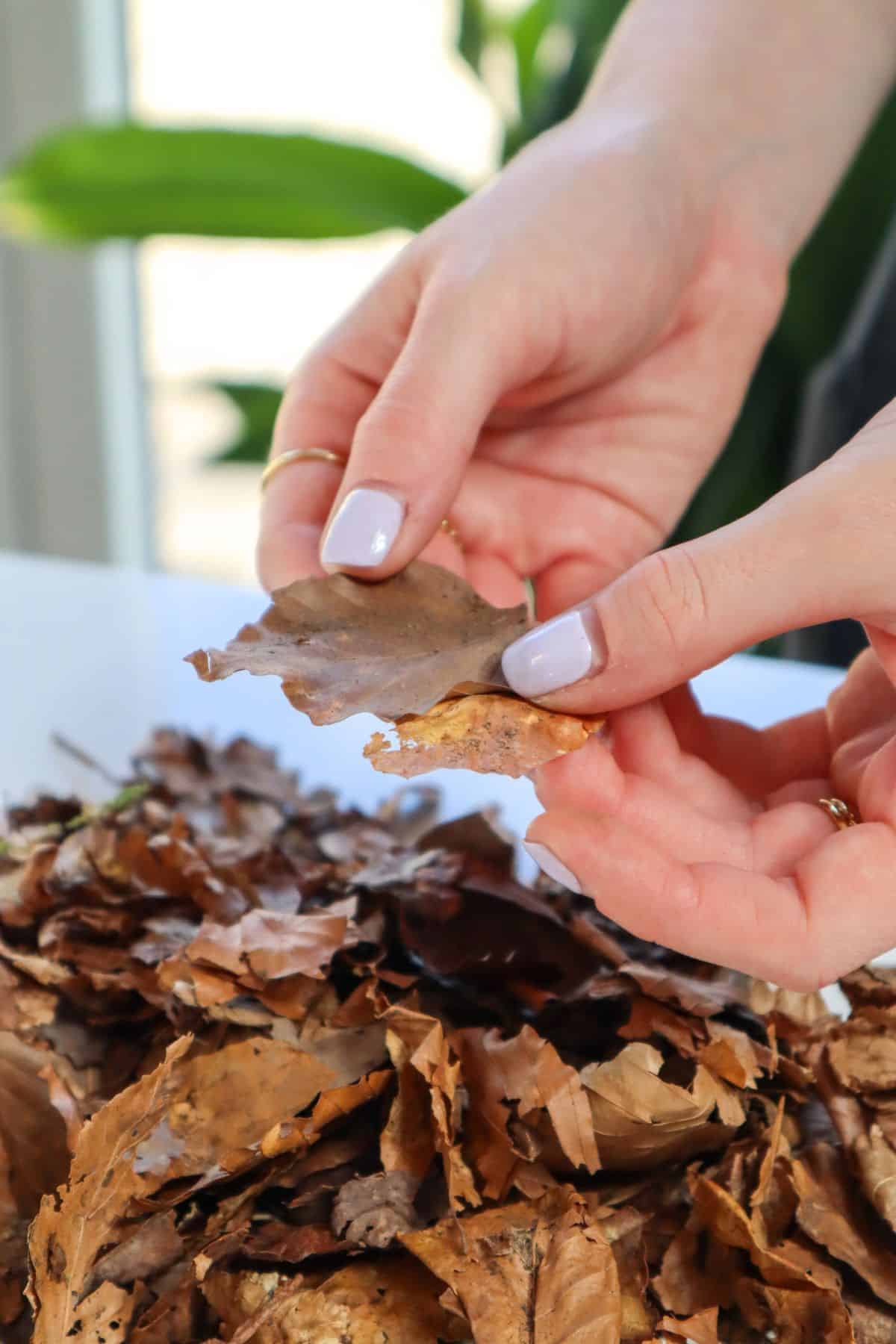
Things to look out for in a good leaf litter product/source.
- The leaves are from a suitable tree (for your setup) – Not all tree leaves are on the cards for bioactive terrariums. For example, pine and cedar sources are reported to potentially release chemicals that can be detrimental to terrarium pet health.1
- Collected from a fertilizer/pesticide-free source – More sources of potentially harmful chemicals to look out for and swiftly avoid. (The leaf litter we sell is organic).
- Dried (and sometimes sterilized) – Most packaged leaf litter is already dry – which will reduce the risk of moisture-loving pests – but not all leaf litter on the market is pre-sterilized. For extra peace of mind, you can do it by baking it in the oven (more on this later).
Next, we’ll examine the typical uses of leaf litter and how to choose the right leaves for the right terrarium inhabitants.
Types of Leaf Litter (& Their Uses)
The types of leaf litter you choose (i.e., what tree species the leaves come from) can have a significant impact on how your cleanup crew and/or pets feed and interact with it.
- Thinner leaves (e.g., Maple leaves) can provide an easy nutrition source for isopods to access. They’ll naturally break down faster, and they’re easier for isopods to chow down on.
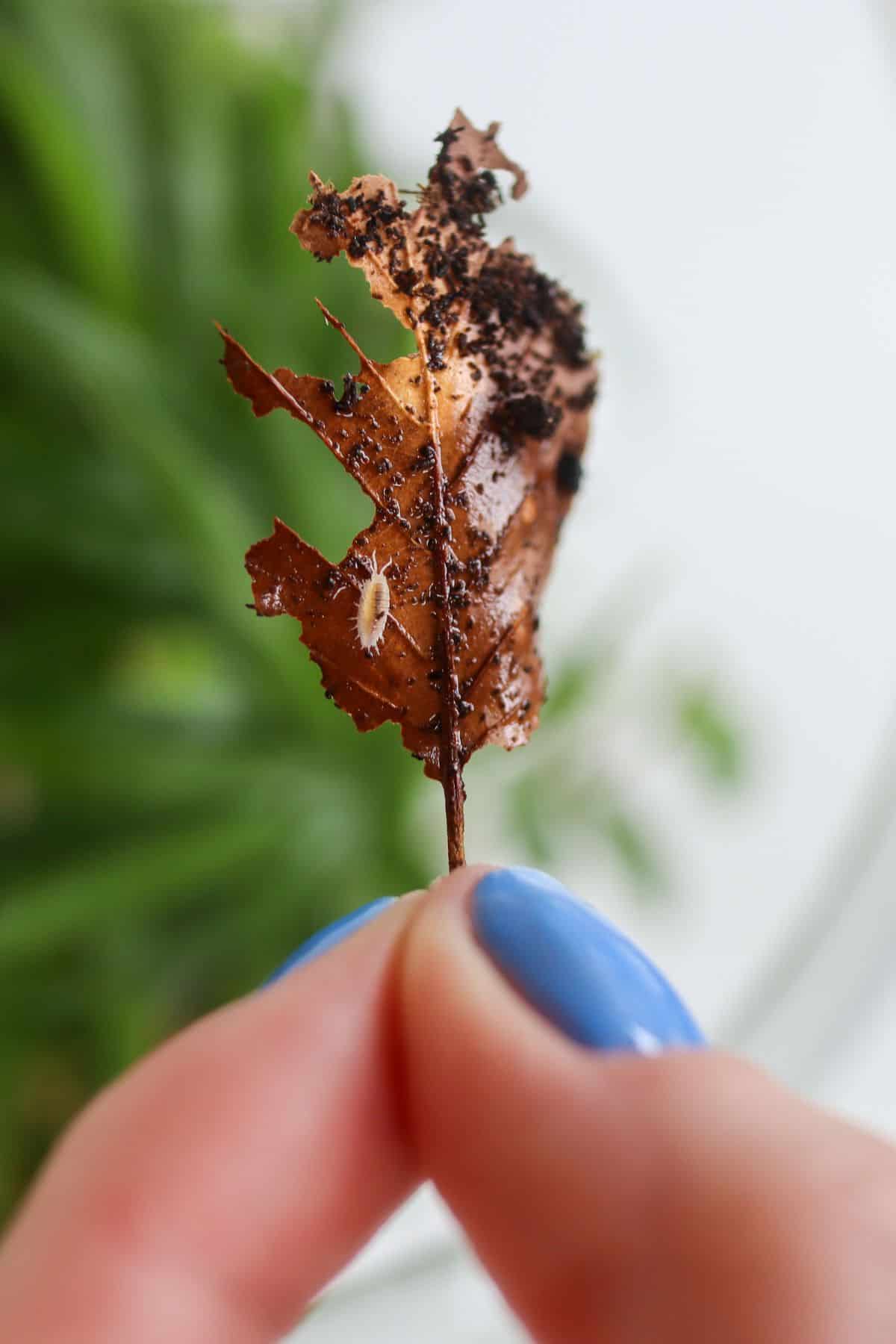
- Thicker leaves (e.g., Magnolia leaves) are more difficult for microfauna to eat but are more stable and less mold-prone in a terrarium environment. So they offer good, long-lasting hiding spot opportunities.
Some leaves, like Oak leaves, are good all-rounders. They’re hardier than Maple but super nutritious.
As far as other leaves go, the isopod team over at Smug Bug reports that they have “had a large success with leaves from trees such as elm, maple, linden, apple, and willow trees.”2
How Much Leaf Litter Do We Use?
How much leaf litter you need for your cleanup crew will depend on the amount of detritus (decaying organic material) your terrarium produces.
That’s the stuff that springtails/isopods feed on, after all, and leaf litter is a good source as it can break down quickly.
Pro Tip: If it’s a freshly planted terrarium, you’ll want to supplement it with a healthy supply of leaf litter. As the system likely won’t yet produce enough organic waste for your isopods to consume. Over time, a settled terrarium will drop more of its own leaves.
That said, any animal pets you may keep will also provide an additional waste “nutrition source” (if you know what I mean). So there’s a balance to be struck.
Reptiles and other terrarium pets primarily like leaf litter for the additional hiding opportunities it brings. So, it can be helpful to make sure they have ample leaves that they can dive into.
The same is true of leaf litter in isopod bins.
It’s recommended we provide a thick covering of leaf litter in isopod bins to give them plenty of cover.
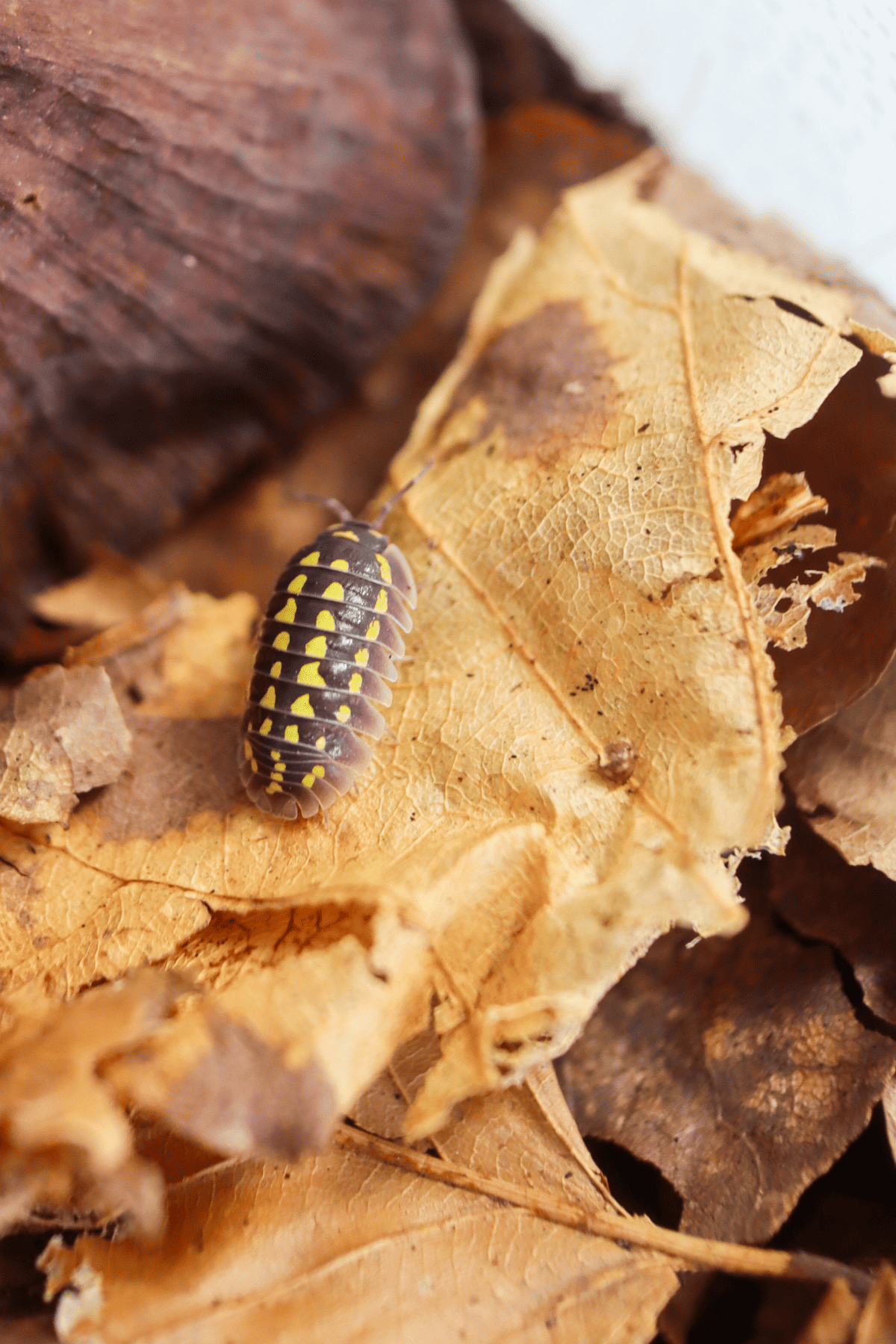
Still, a densely planted terrarium or vivarium offers a lot more cover than a bare isopod tupperware box – so leaf litter doesn’t need to do all the heavy lifting here.
Honestly, I’m a big fan of providing isopods with a naturalistic terrarium setup; you simply get the best out of them.
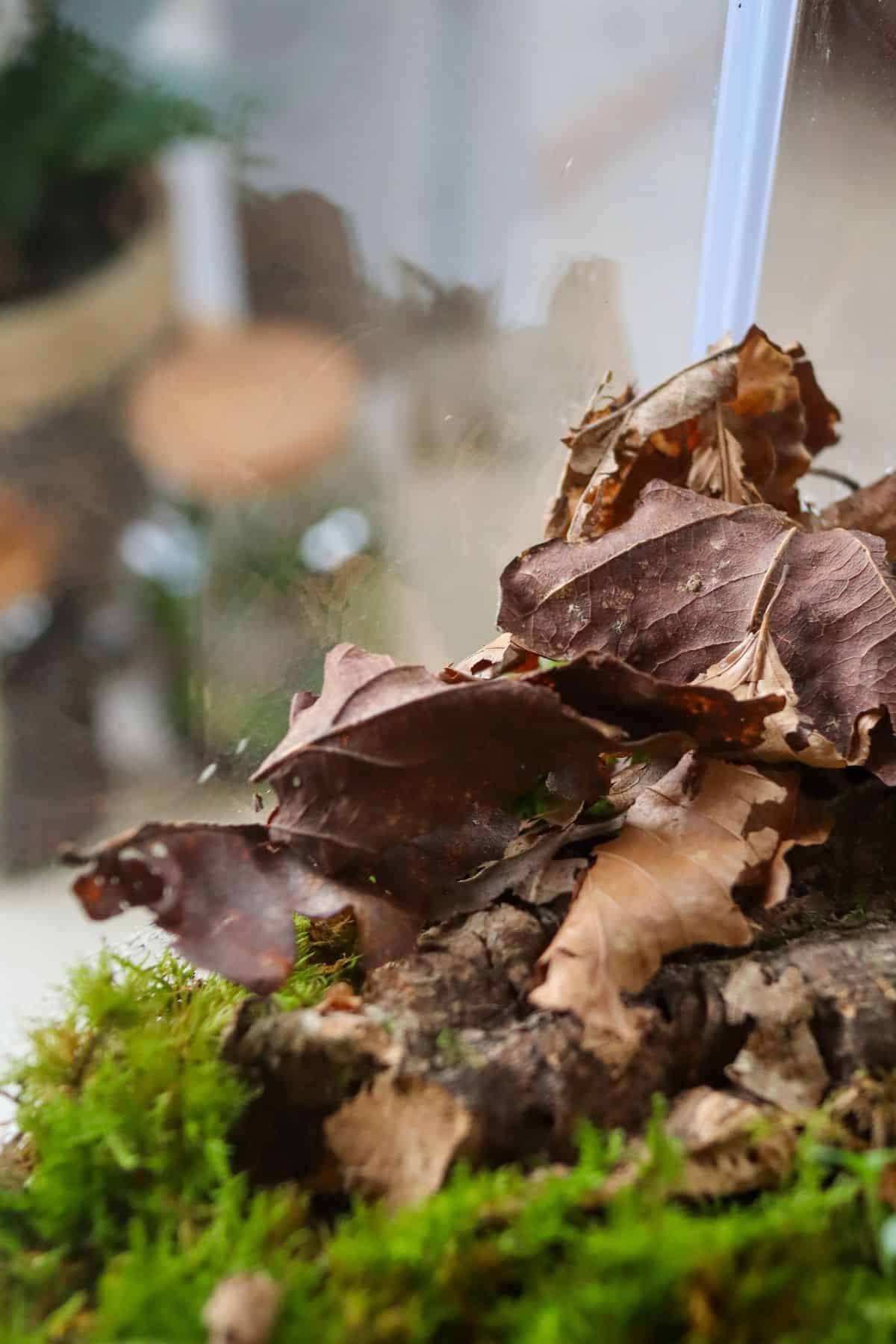
Where to Find Leaf Litter for Sale
👉 We sell pin oak leaf litter in various sizes on our store.
As I mentioned, Oak strikes a nice balance, it’s soft, but a bit tougher than Maple. Thus, it breaks down relatively quickly for your isopods to eat, but provides hiding spots too.
It’s organic too, you don’t need to worry about any nasties hitching a ride!
Can You Collect Leaf Litter Locally?
Honestly, if you can tick all of the animal safety boxes (i.e., no herbicides, pesticides, fertilizers, unsuitable tree species, pests, or dangerous microbial nasties), then I don’t see why not!
I’m really not looking to put you off here – if you can do it legally and safely, then you might as well take advantage.
Personally, I probably would choose to sterilize leaf litter from any new source. There seem to be a variety of popular ways to do it3, but baking the leaves in an oven at 350°F (180°C) for around 20 minutes is an established method.
Overall, based on the various threads about this on popular reptile forums4, it appears that collecting your own leaf litter is not uncommon. But it is naturally highly location-dependent.
And unless you’re storing some over winter (like a squirrel does their nuts), you’ll probably need to buy it in at some point.
Over to You
Leaf litter is the bioactive backbone of terrariums around the world, and I hope this article has managed to help you narrow down the best options for your setup.
What’s your favorite kind of leaf litter? If I’ve missed it off, let me know in the comments.,
Or, if you have a better way to sterilize leaf litter, I’d love to hear it!
Finally, if you’re interested in other food sources for your cleanup crew, check out the respective guides for springtail food and isopod food.
References
